Background
In August of 2021, our team wanted to investigate how users’ search for domains, particularly in relation to the availability of what they search as a .com domain and how their behavior changed. We looked back over 2020/21 and analyzed anonymized data from the Domainsbot Name Suggestion service.
Our goal was to identify trends that can help us improve our service for the benefit of our users and the internet community at large. We feel the insights are worthy of reposting and remain relevant today. The takeaways of that study include:
- The number of individual users searching for a domain grew by 37% since 2020. However, users are submitting significantly less queries per session.
- The number of people searching 5 times or less during a search session grew by 33% while those who searched 6 or more times shrunk by 26%. At this time we do not know if people are finding what they want faster or if they are giving up faster than before.
- The chances of finding an available .com matching exactly what the user searched for are less than 13% for a 2 word query and less than 40% for a three word search. Users need to type a query of at least 20 characters to increase the odds to 50%. These results are in line with the previous year.
- Users tend to search for domains with a certain number of words consistently. About 75% search for domains made of 2 or 3 words and they tend not to add additional words to increase their chances of finding an available .com domain to register.
Breaking down the data
We want to investigate the behavior of users searching for a domain name in the primary market. In particular, we want to understand what are the chances that a users find exactly what they are looking for as an available .com according to:
- The query number within her session (first, second, third query etc…)
- The number of words in the query (e.g. “HealthyVeggies” counts as a two words query)
- The length of the query (e.g. “HealthyVeggies” counts as 14 characters)
We also want to compare these numbers with the previous year (2020) to understand how the .com availability is changing the user behavior.
Naming convention
- Exact Match We define an exact match as a domain whose SLD matches exactly what the user searches for. In case the user searches for a full domain the comparison is on the SLD alone. E.g. The domain “example.com” is an exact match for the queries “exact”, “Exact”, “EXACT” or “exact.live” but not for the query “Exact123” or “Ex-act”.
- Query We define a query as the string or words that a user types when searching for a domain.
- Query number Users typically search more than one query during their search session. We refer to the query number as the number indicating the order in which the user searched. For example, the first query in a session will have the query number set to 1, the second to 2 and so on.
- Domain availability In the context of this study we will refer to a domain availability in reference to the exact matches only and at the time of the query.
Methods
We have analyzed an aggregated and anonymized set of requests to the Domainsbot Name Suggestion from May 1st 2020 to May 31st 2020 and from the same period in 2021. The majority of requests were in the English language, followed by Italian, Spanish, Portuguese and French. From this initial dataset we have discarded requests matching any of the following conditions:
- Request without an anonymized session ID
- Requests not allowing suggestions for a .com exact match
- Requests from a session ID used more than 1000 times in a month
- Requests for a query searched more than 40 times in a month
For the purpose of this analysis we have excluded dashes from the word count (e.g. “Healthy-Veggies” would count as two words).
Results
Part 1 – Number of queries per search session
Chart 1 – distribution of queries per session
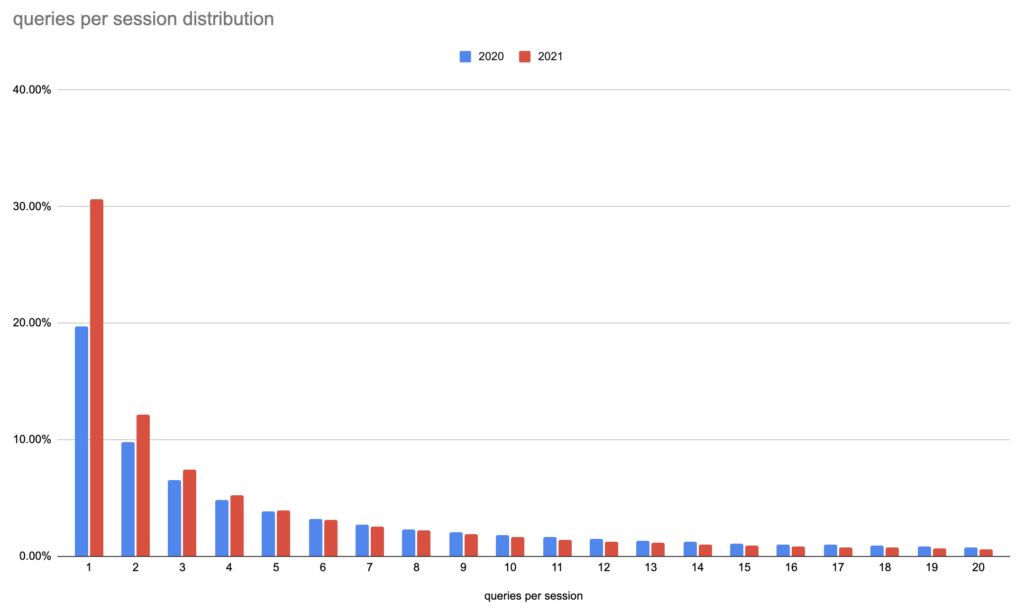
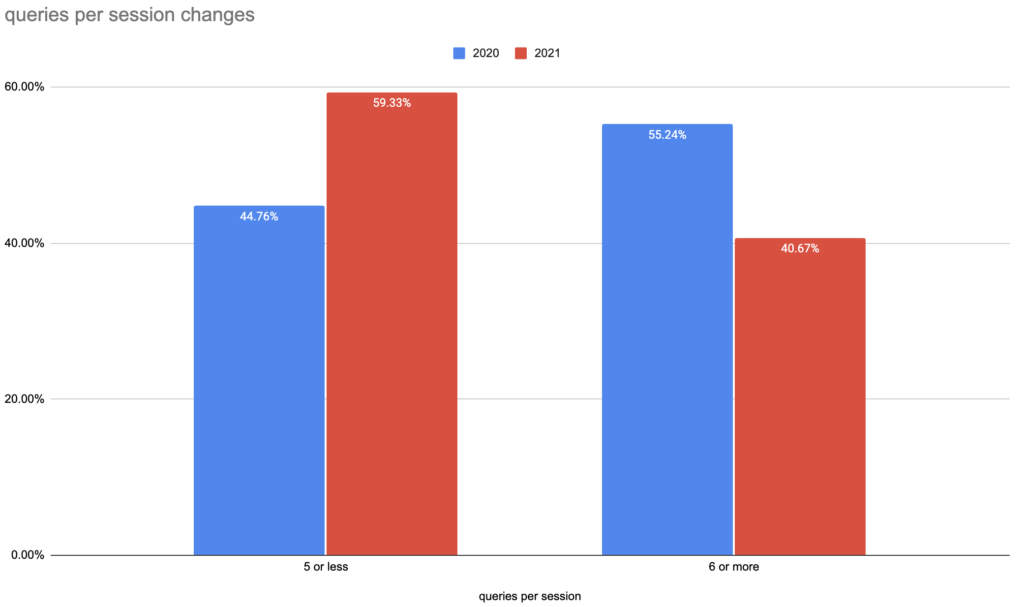
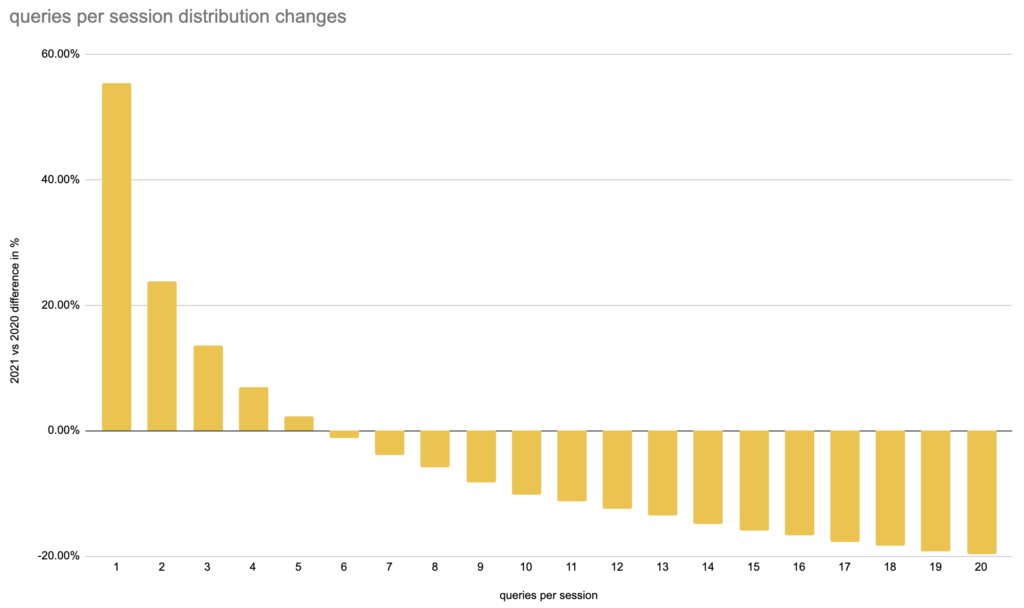
The percentage of queries performed by users searching just one time grew by 55% (30.65% in 2021 vs 19.73% in 2020) followed by the queries of users searching just two times per session (24%) and then three queries per session (14%). The rate has been instead steadily negative for each cohort of queries performed by users searching more than 6 times during their session. It is interesting to note the growth trend is a monotonic function (meaning it is always decreasing).
Part 2 – .com availability per number of words or query length
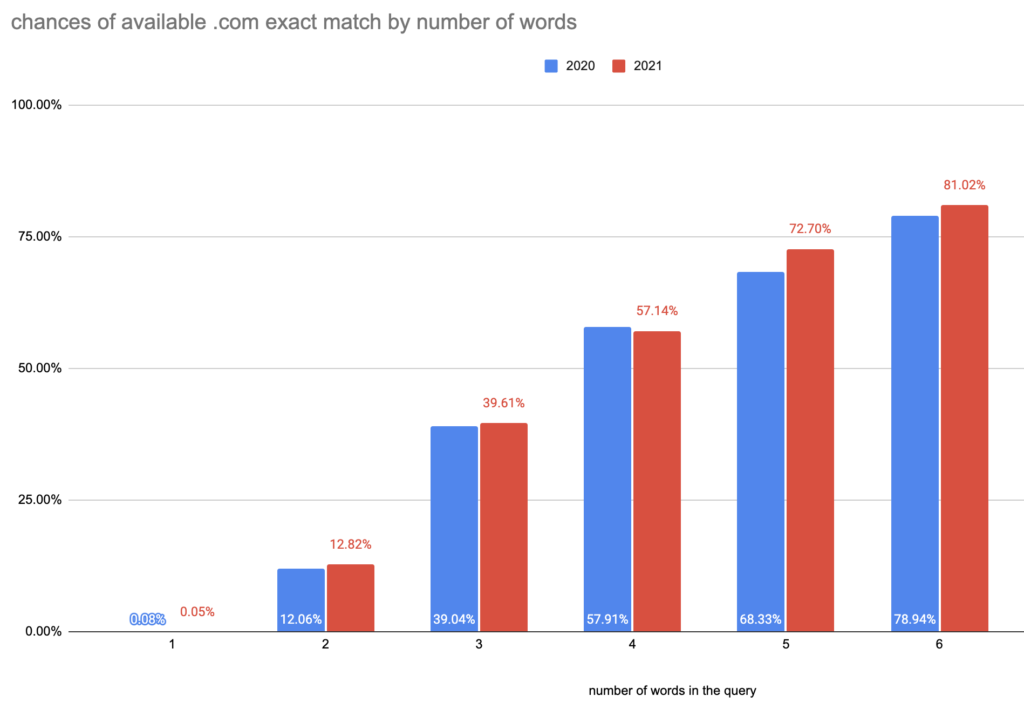
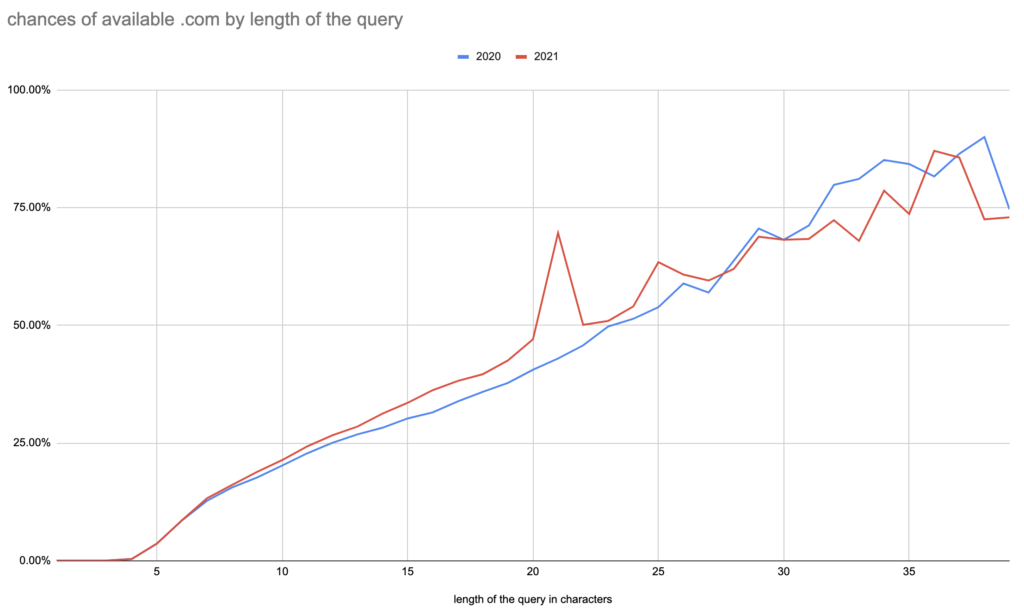
Part 3 – Attitude toward changing search pattern during session
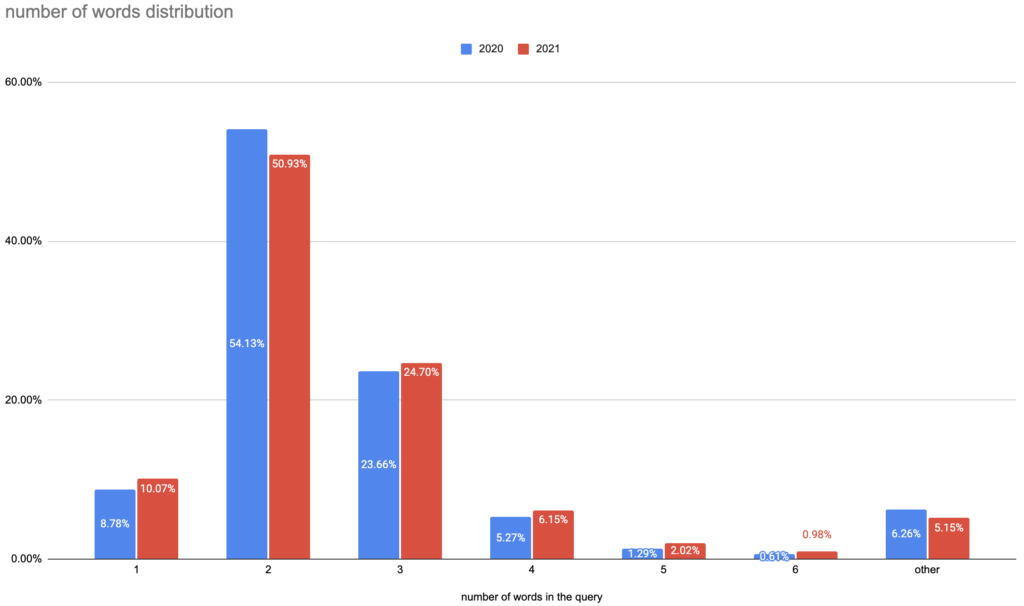
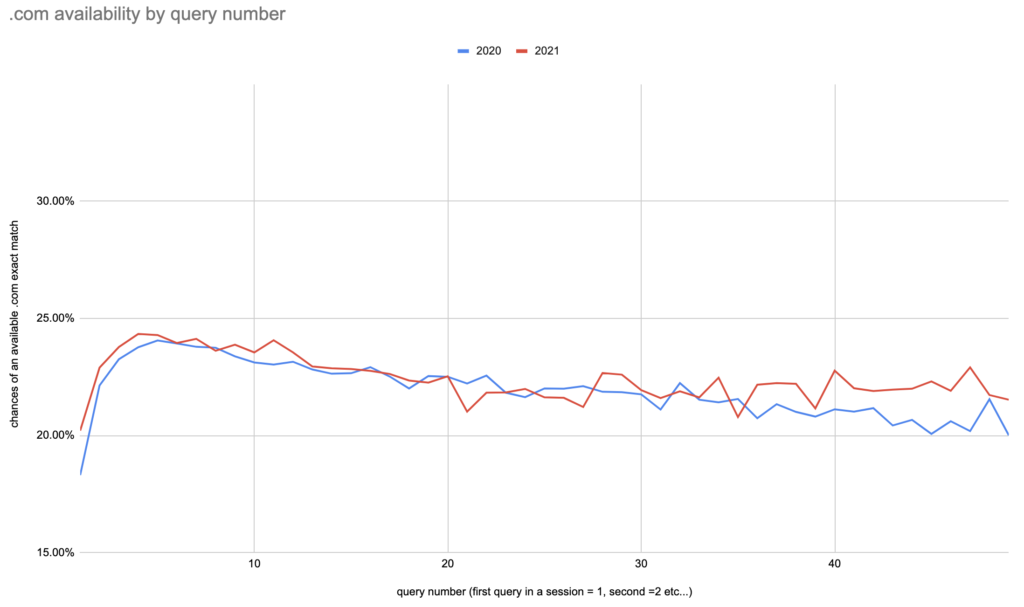
Conclusions
- How did the evidence of less queries per session affect registration trends?
- How many users register and develop a domain in a non .com extension even if the .com equivalent is already registered (possibly by someone else)?
- Is a synonym based domain suggestion effective to alleviate the user pain of not finding what they search for available as a .com?
- Is there evidence that a growing number of users look at the secondary market when they cannot find what they are looking for as a .com domain available in the primary market?
The answer to these questions can help our industry to understand how to evolve to address a potential pain for the consumers.
Finally, we are aware that 2020, the first year of Covid-19, was an exceptional year, including for our industry and that this study should be expanded taking in consideration additional years in the past and the future.
Interested to see the results if we conducted this study again? Have additional questions to add to the study? Let us know! ciao@domainsbot.com
For any questions please contact us at: insights@domainsbot.com
Compliance
This study uses anonymized and aggregated data collected from Domainbot’s proprietary Name Suggestion service. In compliance with GDPR, no personally identifiable information has been stored nor used during the study. We receive and process a fully pseudo-anonymized session ID in compliance with both privacy and security requirements. The actual content of the queries was not processed directly during the creation of this study. The number of words, their length and the .com exact match availability were inferred, when possible, from the logs of our response to the service request.



